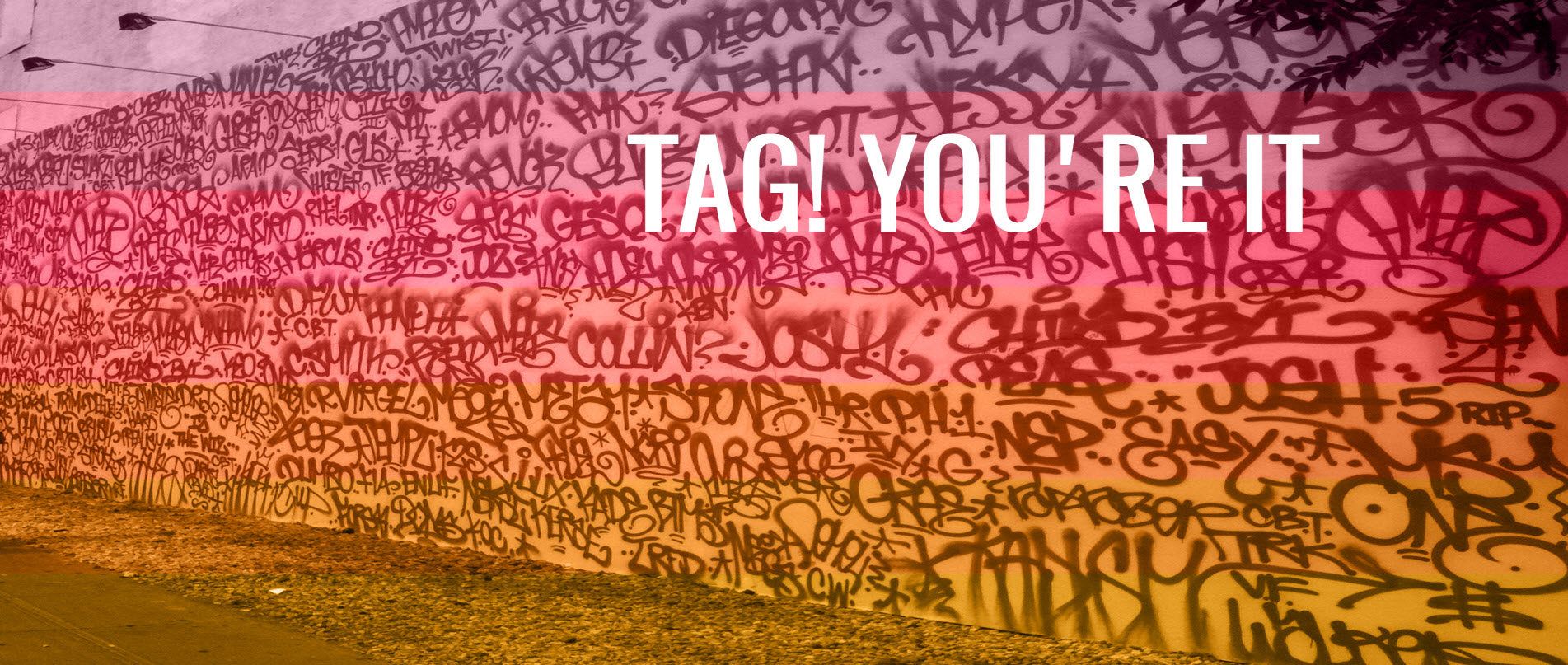
Prompt Images
When you’re a writer by day and a writer by night you may know a thing or seven about writing. I staked out The Prompt’s own Sarah Razner (@misssarahrazner if you’re nasty) to ask her a few questions about her writing practice and her quiver of characters as part of our newest series:
TAG! You’re It.
1. You are one of our most consistent writers… How do you do it?! Do you have a dedicated time or writing practice? Tell us your secrets.
The Prompt makes me feel like I am back in my favorite college class—Creative Writing. The assignments didn’t feel like work because I was getting to do something I truly enjoyed. That’s how it feels writing for The Prompt—a chance to flex some creative muscles that I don’t always get to use and have fun doing something I am passionate about. I love it.
Also, writing is part of my daily routine. You know how for some people if they don’t get their coffee in the morning or their workout in for the day, they are just… off? If I don’t get to write something for myself during the day, I feel like I have pent up energy, usually expressed with a bit of irritability/anxiousness. It is my release valve, so I always try to carve out time each day to get some writing in—usually right before I go to bed. Sometimes it is only ten minutes, sometimes I get an hour in, but no matter the length of time, it helps me to relax and feel like I’ve accomplished something, even if it is jotting down a lone sentence for a story that is not fully formed yet.
2. You make it look so… possible… to be inspired by every prompt. Is it really that easy or do you ever struggle to connect?
Thank you for saying that because it doesn’t always feel that way! With some prompts, the inspiration comes right away as we’re discussing it in our meetings, and I can start putting down ideas and fleshing out a story that night. Other times it feels like I’m mining an idea for days, just trying to find some nugget I can build on. In that case, to get the momentum going, I’ve started by writing a setting description with the hope it leads me to a larger story. I’ve pulled on ideas I’ve batted around for a while and found that I can make them fit with a prompt, so I’ve combined them.
Those instances of synergy feel like the writing gods are smiling down upon me.
3. Let’s talk names. Do you keep a running list of names you’ve used? Names you haven’t? Do you like every name you’ve used? Do you ever write a character and then feel like the name isn’t right?
When I’ve worked on larger stories, I have kept a list of names just to make sure that I am not using the same one within the same piece. Otherwise, I Google names to find one that I like and rely on my memory to tell me if I’ve already used it, which is not a very reliable system. I was recently looking at a few short stories I had done years ago, and for some reason, the name Nate was a side character in all of them. When it came to writing a bigger piece, I reached for that name again, because clearly, I liked it. I am sure I have duplicated more names than just that one.
Looking back, I wouldn’t deem all the names I’ve chosen as winners. I have changed names mid-stream because the character called for something different or because I didn’t like how the name sounded with those of the other characters. There has to be some flow between them.
Where I end up with the most naming regret is when I pick the first name that comes to mind because I need a name (usually during those 10-minute writing sessions), rather than doing a search to find one that suits my theme/plot better. This happened just a few weeks ago when I wrote a character named Marcy [Ed. note: this was the exact piece and name that inspired my desire to interview Sarah]. There’s nothing wrong with that name, but in retrospect, I feel like a different name would’ve fit the character better—maybe something with a little more edge. Now, when I read it, I just think of the Peanuts character.
4. You’ve created a whole little universe! Any plans for crossover stories?
Most of my stories could take place in the same world, as they tend to focus on people going about day-to-day life, rather than some high-level sci-fi world that would require a multiverse angle to join them. There are definitely a few with similar themes that would make a crossover easier to happen.
Having the ability to build off a story, be it through a crossover or continuing it with a sequel, is exciting. While some stories have a definite end, others are more open. A story that I would really like to return to one I did about a girl named Adelaide (just realized I used that name in a different story, too) who had run away from home. I had written that story in two installments, but left it hanging and I think that I could find a way to connect that with another one of my stories if I found the right one. I am on the hunt for it now.
5. What’s a story you’re most proud of?
Last year, we had the prompt “cicadas.” I would not expect the story I am proudest of to spring from a creature that makes such an annoying sound, but it did, nonetheless. “Cicadas: Screaming into a Wind Tunnel” is about a girl named Solana going to see the cicadas with her boyfriend, Miah, who is obsessed with them—with a twist thrown in.
It’s a relatively simple setup, nothing too complex, but it required that I put much more effort into pacing than I normally do. I had to have the patience to not drop too many hints and rush to the reveal.
In that build up, I got to write some of my favorite descriptions I had, while making sure to infuse as much emotion into as I could, so when the reveal happened, the reader would feel the impact of it. I don’t know how successful I was in this, but I do know I was happy with how it turned out.
Side note: I learned a lot about cicadas in researching for the story, and they really are quite the interesting creatures!
6. Any that you don’t like? I know for myself, there are some pieces I wrote 5 years ago whose language feels very 2017 and I cringe when I reread.
Oh, definitely. When I look at stories back from when I first started writing more seriously, I am embarrassed. At the time, I thought they were great and for sure publishing material. Since then, I have done a lot more writing and learned a lot more, and while I may not still be publishing material, I do know that it is best if no one sees those stories. Ever.
I can think of a few stories from two, three years back, too, that although aren’t terribly written, are trite and too saccharine for my taste now. I like a happy ending as much as anyone—and I still write those—but I’ve moved further away from trying to resolve everything and wrap it up in a nice little bow—a pattern I was able to recognize when writing for The Prompt.
There’s plenty of other emotions to dive into other than happiness, and with them comes the ability to create a powerful story, and I find that just as interesting if not more.
7. What’s a quote about writing or creativity that inspires you?
There’s a quote by John Green I really like: “Writing, or at least good writing, is an outgrowth of that urge to use language to communicate complex ideas and experiences between people. And that’s true whether you’re reading Shakespeare or bad vampire fiction—reading is always an act of empathy. It’s always an imagining of what it’s like to be someone else.”
It encapsulates one of the things I find most enjoyable—and fascinating—about writing and reading. When you sit down to write a story, you can take all the traits you don’t like about someone and put them in a character. But you then have to put yourself in the shoes of that character and figure out why they are the way they are so you can explain it to the reader and make them human. Not only does it make you more understanding of others, I think, but also of yourself.
When I am going through something, sitting down to write helps me to work through it, sometimes in ways I don’t expect. In the words of Hamilton, “I write my way out.” The same goes for reading. When I’ve felt completely alone in the world and picked up a book, I always found a character I could relate to on some level, too, and knew that somewhere in the human experience was someone like me.
This ability we have as people, to create worlds we’ve never seen and imagine ourselves in them, it’s awe inspiring.
Come back again soon and see who Sarah tags as we continue our series, TAG! You’re It.





